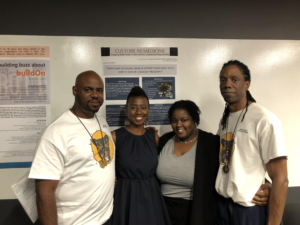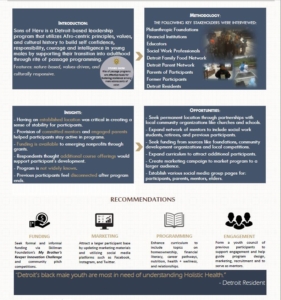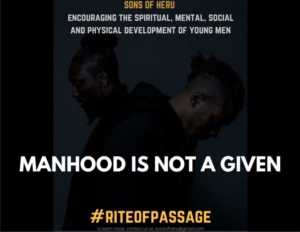How I utilized creative problem solving through Design Thinking to support Black male leadership development in Detroit.

Design Thinking is a design methodology that provides a solution-based approach to solving problems. The five stages of Design Thinking, according to d.school, are: Empathize, Define (the problem), Ideate, Prototype, and Test.
I have a personal interest in indigenous wisdom, cultural preservation and personal development. So when the opportunity to select partners for our final impact project arose, I decided to contribute my capacity to an up-and-coming community organization focusing on rite of passage programs. Sons of Heru’s mission is to encourage the spiritual, mental, social, and physical development of young men. I reached out to them and they were interested in working together and we soon co-created our design question: “How might we engage a larger audience of Detroit’s black male youth in leadership programs?”
Empathy
I started the design thinking process with community interviews. I reached out to a variety of stakeholders from residents and schools, to funding institutions and social work professionals. The insights I gathered was surprising.
Define
Defining the problem. It turns out stakeholders interviewed enjoyed the program and thought it was a timely community need, however various barriers to participation arose that prohibited participants from fully committing to the program. These included: limited transportation, funding, socia
l connectivity, and location. So the current issue focused more on barrier removal than participant engagement.
Ideate
The next stage in the Design Thinking process is Ideation – coming up with as many ideas to creatively solve the problem. Ideas ranged from parent carpooling, community pitch competitions, introduction of bikes, youth councils, a “silver circle” of elders who could serve as mentors, mobile programing units, and partnering with local schools to name a few.
Prototype
From the above ideation stage, I moved on to the prototype stage in which you build out your ideas. My deliverables included: 1) a community interview report with program recommendations to help inform Sons of Heru with the program design process; 2) A theory of change framework to support the project partner with funding applications; 3) Enhanced marketing materials to attract new participants to the program.
Test
I tested my deliverables with various community members to get their feedback. After a few rounds of edits, I was ready to present my findings at our Impact Project showcase held at Tech Town!
Overall, the project was a great way for me to explore the benefits of Design Thinking and community impact. I learned a great deal, from how to remain flexible and creative when plans change to the importance of project scoping and stakeholder engagement. I am looking forward to utilizing the tools I learned throughout the Fellowship for years to come!

